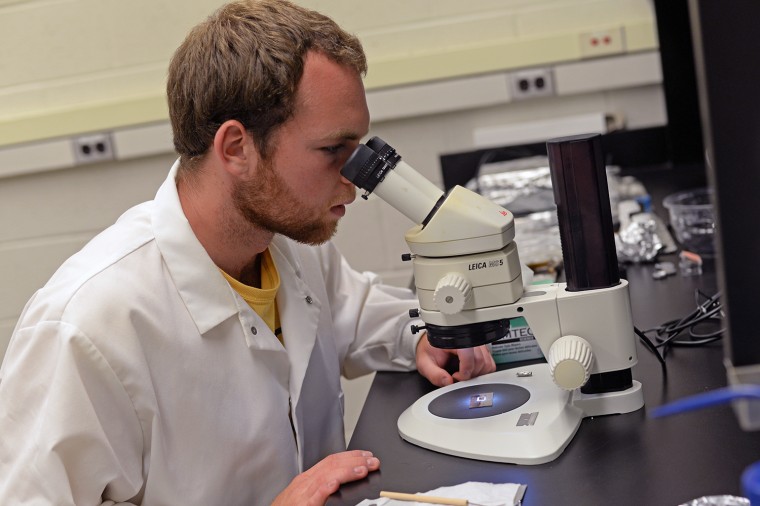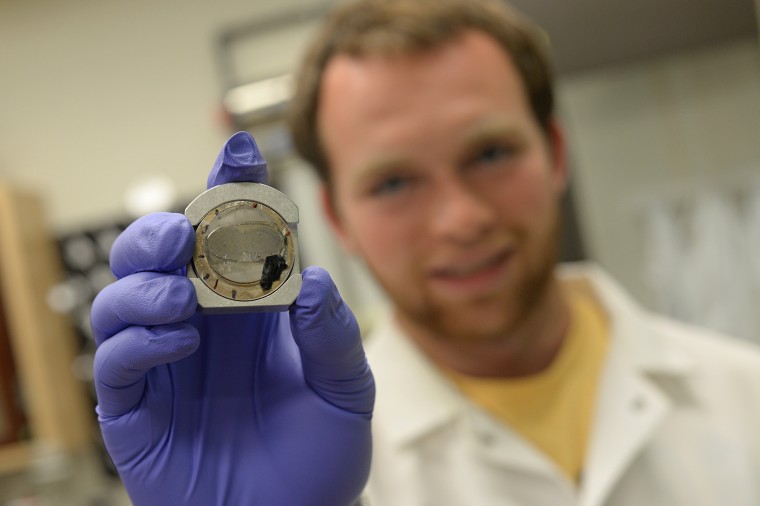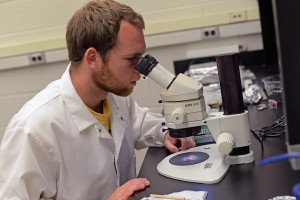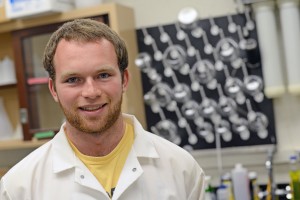Singer ’15 to Study Moon Rocks as Connecticut Space Grant Fellow


As a recent recipient of an undergraduate research fellowship, Jack Singer ’15 is spending his summer at Wesleyan studying the geochemical evolution of the moon.
The fellowship, supported by the Connecticut Space Grant College Consortium, comes with a $5,000 award. Grantees are expected to work on research related to space/aerospace science or engineering under the guidance of a faculty member or a mentor from industry.

For the next three months, Singer will work on various research projects with his advisor James Greenwood, assistant professor of earth and environmental science. Singer will first prepare a fragmented lunar sample (Apollo 12035,76) for analysis under an ion microprobe. An ion microprobe applies a beam of charged ions to the sample and helps determine the composition of the material.
This rock contains olivine, a mineral that is mysteriously sparse in many different lunar samples.
“By analyzing the melt inclusions contained within olivine in this rock, I’ll be able to better understand geochemical evolution of the moon,” Singer said.
Singer’s second project is more experimental. He’s attempting to model and quantify diffusion in a late-stage lunar environment (one of the last regions to cool on the moon) by synthesizing a granite-rich model lunar glass.
Singer will heat this glass past its melting point and place it in contact with solid terrestrial apatite — the Moon’s major water-bearing mineral — and measure how elements diffuse across the glass-grain (or solid-liquid) boundary.

“This type of analysis helps us to better understand the processes that occurred during the last stages of lunar cooling,” he explained.
In addition, Singer and Greenwood will travel to Japan this summer to use an ion microprobe at Hokkaido University.
“This machine allows us to analyze and measure stable isotope ratios in the minerals we are interested in, and can therefore tell us something about the fractionation and geochemical history of the lunar body,” Singer said.
Next fall, Singer will write about his research findings.

